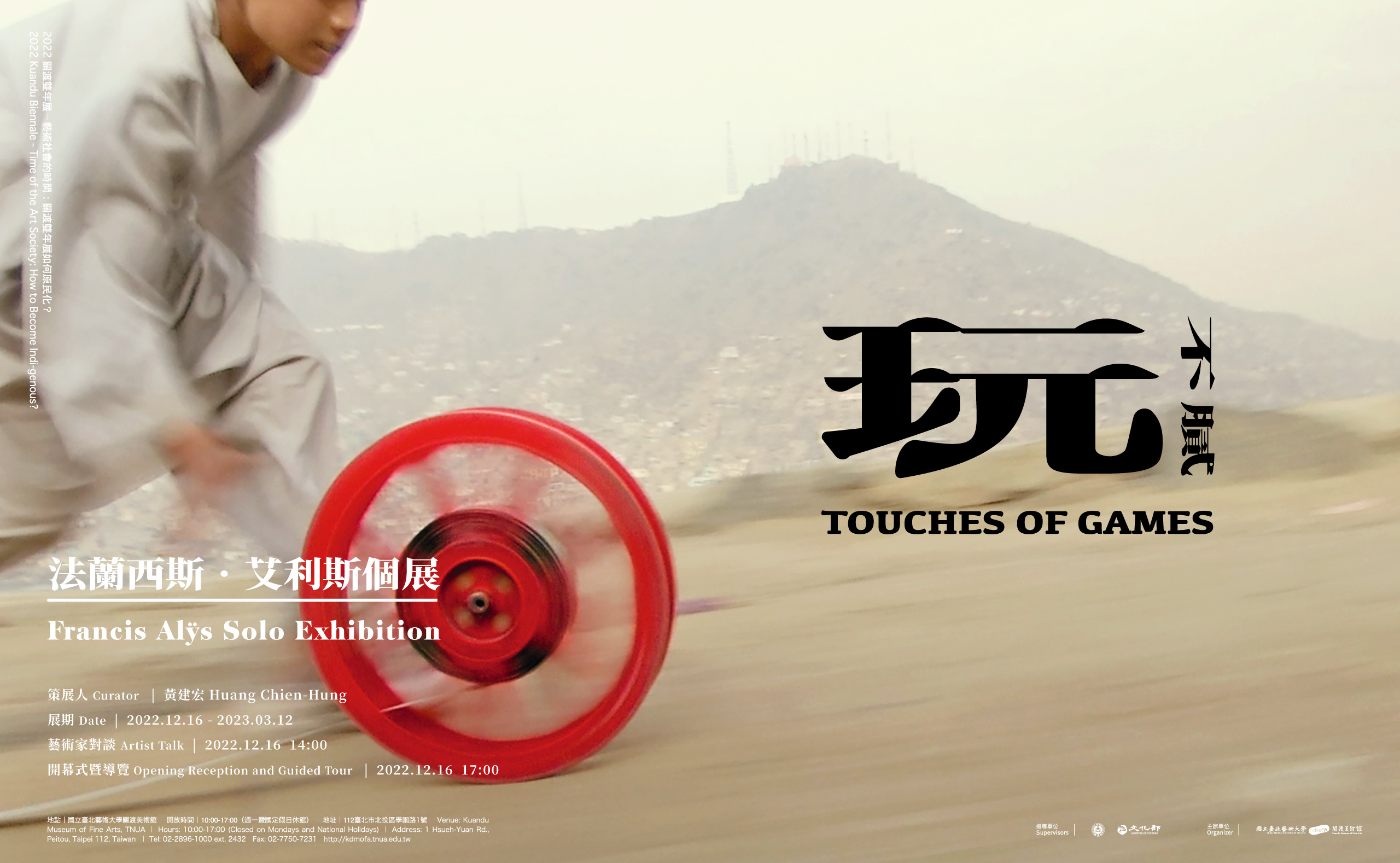Francis Alÿs
Francis Alÿs (1959, Belgium, lives and works in Mexico City) was trained as an architect and urbanist, Francis Alÿs moved to Mexico in 1986 to work with local NGO’s. In 1990 he entered the field of visual arts. His practice embraces multiple media, from painting and drawing to video and photography. Although his studio is based in Mexico City, he has done over the last 20 years numerous projects in collaboration with local communities around the world, from South America to North Africa and Middle East. For example, in Peru he produced an event where 500 volunteers moved a sand dune just a few centimeters (When Faith Moves Mountains, Lima, 2002). Since 2016 he has been engaged in a series of new projects in Iraq, such as Hopscotch (2016), produced in collaboration with the Yazidi Refugee Camp of Sharya, Duhok, Iraq, or Color Matching (2016), filmed while being embedded with Kurdish forces during the siege of Mosul. In 2020 he premiered the feature film Sandlines produced in collaboration with Julien Devaux and the children of a small mountain village of the Nineveh province in festivals such as Sundance, the International Film Festival Rotterdam, FID Marseille, and many others.
Francis Alÿs has had solo exhibitions in museums worldwide, such as Belgian Pavilion at the 59 th Venice Biennale, Italy (2022); the Rock-bund Art Museum, Shanghai (2018); Ikon Gallery, Birmingham (2018); Art Gallery of Ontario, Toronto (2017); Museo Nacional de Bellas Artes de la Habana, Havana (2016); Museo Tamayo Arte Contemporáneo, Mexico City (2015); dOCUMENTA (13), Kassel, Germany, and Kabul, Afghanistan; Museum of Contemporary Art, Tokyo (2013); Museum of Modern Art (MoMA), New York (2011); Tate Modern, London (2010), among others. He was awarded the Blue Orange prize in 2004, the Vincent Award in 2008, the BACA-laureate prize in 2010, the EYE Art & Film Prize from EYE Filmmuseum in 2018. In 2020, he received the Whitechapel Gallery Art Icon Award and the Rolf Schock Prize in Visual Arts.
